 | TODAY IN SCIENCE HISTORY NEWSLETTER - 13 JUNE |
| Feature for Today |
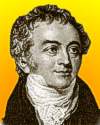 On 13 Jun 1773, English physician, physicist and Egyptologist was born. If you've taken a physics class, his name probably came up, though without much fanfare. On 13 Jun 1773, English physician, physicist and Egyptologist was born. If you've taken a physics class, his name probably came up, though without much fanfare.And yet he has been called one of the greatest minds since Isaac Newton. His breadth of knowledge was almost all-encompassing. In fact, it was said that if he learned something about law, he'd know a little about everything! Even if you know his name, you probably did not know he started as a physician (M.D.). The biography of this scientist from Harper's Magazine (1890) reveals a fascinating man, and is another example of an article you read and come away wondering how you could have known so little about a scientist who had made such significant contributions. |
| Book of the Day | |
| |
| Quotations for Today | |
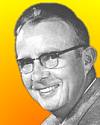 | "(My father) advised me to sit every few months in my reading chair for an entire evening, close my eyes and try to think of new problems to solve. I took his advice very seriously and have been glad ever since that he did." |
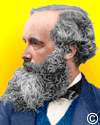 | "All the mathematical sciences are founded on relations between physical laws and laws of numbers, so that the aim of exact science is to reduce the problems of nature to the determination of quantities by operations with numbers." |
 | "Scientific investigations are a sort of warfare, carried on in the closet or on the couch against all one’s contemporaries and predecessors; I have often gained a single victory when I have been half asleep, but more frequently found, on being thoroughly awake, that the enemy had still the advantage of me when I thought I had him fast in a corner—and all this, you see, keeps one alive." |
| QUIZ | |
| Before you look at today's web page, see if you can answer some of these questions about the events that happened on this day. Some of the names are very familiar. Others will likely stump you. Tickle your curiosity with these questions, then check your answers on today's web page. | |
| Births | |
 |  A Scottish physicist and mathematician was born 13 Jun 1831, whose researches united electricity and magnetism into the concept of the electro-magnetic field. In London, around 1862, he calculated that the speed of propagation of an electromagnetic field is approximately that of the speed of light. He proposed that the phenomenon of light is therefore an electromagnetic phenomenon. The four partial differential equations, now known by his name, first appeared in fully developed form in Electricity and Magnetism (1873). A Scottish physicist and mathematician was born 13 Jun 1831, whose researches united electricity and magnetism into the concept of the electro-magnetic field. In London, around 1862, he calculated that the speed of propagation of an electromagnetic field is approximately that of the speed of light. He proposed that the phenomenon of light is therefore an electromagnetic phenomenon. The four partial differential equations, now known by his name, first appeared in fully developed form in Electricity and Magnetism (1873). Can you name this man? Can you name this man? |
 |  An English physician and physicist was born 13 Jun 1773, who reinforced the wave theory of light with his study of interference of light. A modulus of elasticity is named after his work with elasticity. (He was also an Egyptologist who helped decipher the Rosetta Stone.) An English physician and physicist was born 13 Jun 1773, who reinforced the wave theory of light with his study of interference of light. A modulus of elasticity is named after his work with elasticity. (He was also an Egyptologist who helped decipher the Rosetta Stone.) Can you name this man? Can you name this man? |
| Deaths | |
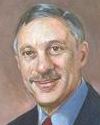 |  James B. Pollack died 13 Jun 1994. He was an American scientist who was a NASA researcher and who helped develop the theory that atomic war would result in a "nuclear winter". He modelled the early evolution of the giant gas planets. He discovered the first real evidence that the clouds of Venus are composed of acid. James B. Pollack died 13 Jun 1994. He was an American scientist who was a NASA researcher and who helped develop the theory that atomic war would result in a "nuclear winter". He modelled the early evolution of the giant gas planets. He discovered the first real evidence that the clouds of Venus are composed of acid.  Which acid did he find in the clouds of Venus? Which acid did he find in the clouds of Venus? |
| |  Freidrich Earnst Dorn (1848-1916) was a German physicist who followed Madame Curie's discoveries with his own study of radioactivity and discovered that radium not only emitted radiation, but released a gas that was also itself radioactive. The experiment provided the first clearly demonstrated example of one element transmuting to another through the process of releasing radiation. Freidrich Earnst Dorn (1848-1916) was a German physicist who followed Madame Curie's discoveries with his own study of radioactivity and discovered that radium not only emitted radiation, but released a gas that was also itself radioactive. The experiment provided the first clearly demonstrated example of one element transmuting to another through the process of releasing radiation.  What radioactive gaseous element did he discover? What radioactive gaseous element did he discover? |
| Events | |
 In 1877, Louis Pasteur began his quest to develop a vaccine for a certain disease by visiting the slaughterhouses of Chartres to take blood samples from corpses of farm animals that have died of this disease. In 1877, Louis Pasteur began his quest to develop a vaccine for a certain disease by visiting the slaughterhouses of Chartres to take blood samples from corpses of farm animals that have died of this disease. What disease did he seek to prepare a vaccine? What disease did he seek to prepare a vaccine? | |
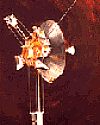 |  In 1983, space probe vehicle Pioneer 10 crossed the orbit of a ceratin planet, a landmark event in its travel across the Solar System. In 1983, space probe vehicle Pioneer 10 crossed the orbit of a ceratin planet, a landmark event in its travel across the Solar System. Which planet orbit did it cross, and why was it a landmark event? Which planet orbit did it cross, and why was it a landmark event? |
| Answers |
When you have your answers ready to all the questions above, you'll find all the information to check them, and more, on the June 13 web page of Today in Science History. Or, try this link first for just the brief answers. Fast answers for the previous newsletter for June 12: radio waves; John Augustus Roebling; bees; the study of rock minerals by viewing thin slices of rock under a microscope; Gossamer Albatross; the walking gait of individuals, to distinguish between actual and spurious limps in damage claims for injuries; the decade including the year 1913. |
| Feedback |
 If you enjoy this newsletter, the website, or wish to offer encouragement or ideas, please send feedback by using your mail reader Reply button. If you enjoy this newsletter, the website, or wish to offer encouragement or ideas, please send feedback by using your mail reader Reply button. |
--
If you do not want to receive any more newsletters, Unsubscribe
To update your preferences and to unsubscribe visit this link


Δεν υπάρχουν σχόλια:
Δημοσίευση σχολίου